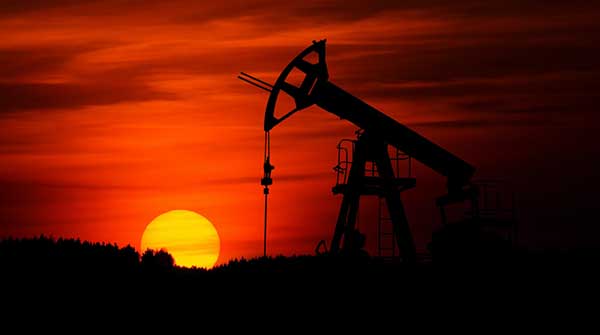By Mark Milke
and Lennie Kaplan
Canadian Energy Centre
Over the past decade, one oft-heard claim is that oil and gas is a ‘sunset’ industry, where investment in Canada can be expected to decline given a worldwide flight from oil and investment.
 Mark Milke |
 Lennie Kaplan |
However, international data (available from 2009 to 2017) show no such worldwide flight from oil and gas investment. Instead, investment increased worldwide between 2009 and 2014, dropped dramatically in value in 2014 given the world oil price plunge, but recovered and was creeping up again as of 2017.
One exception to this investment rebound was Canada, a laggard when compared with the United States, Russia and Asia.
Between 2009 and 2017, capital expenditures in Canadian oil and gas, measured in U.S. dollars, grew from just $32.6 billion in 2009 to $73 billion in 2014, and dropped back to $32.8 billion as of 2017.
Canada was virtually no better at attracting oil and gas capital investment in 2017 than it was eight years previous, attracting just one percent more in investment.
Many other countries and regions experienced the same initial pattern – rising oil and gas investment between 2009 and 2014 and then a slump in value due to the 2014 oil price crash. However, after 2014, Canada stalled out while others saw significantly higher investment by 2017.
Russia and Asia (combined in the available data) recorded capital investment of $104 billion in 2009 but $123 billion in 2017, or 19 percent higher.
The United States recorded $70 billion in oil and gas investment in 2009 and $106 billion in 2017, 51 percent higher.
| RELATED CONTENT |
| Think the oil industry is dying? Think again By Rashid Husain Syed |
| More world oil and gas investment desperately needed, report warns By Deborah Jaremko |
| Why some oil and gas investment was doomed regardless of COVID-19 By Ian Madsen |
The overall world investment picture was also higher. In 2009, capital investment in oil and gas projects amounted to $400 billion. That rose to $790 billion by 2014, plummeted to a low of $430 billion by 2016 before recovering slightly in 2017, to $440 billion, still 10 percent higher than in 2009.
There were two exceptions to double-digit increases in oil and gas investment. One was in the Middle East and Africa, where investment in 2017 ($35 billion) was 32 percent lower than in 2009 ($52 billion).
Canada, with a mere one percent increase in oil and gas investment between 2009 and 2017, was the other exception to the recovery in oil and gas investment worldwide. Russia, Asia and the United States were the prime beneficiaries.
The result of Canada’s lagging attractiveness for oil and gas investment dollars means a smaller market share for such capital. In 2009, Canada attracted eight percent of all such capital flows compared with seven percent in 2017. The Middle East and Africa saw a deeper decline, from 13 percent to eight percent of such capital flows.
On the other side of the ledger, Russia and Asia attracted 28 percent of all oil and gas investment in 2017, up from 26 percent in 2009. The United States benefited most from the investment rebound, attracting 35 percent of oil and gas investment in 2017 compared with 24 percent eight years previous.
Claims of a decline in oil and gas investment in Canada starting a decade or more ago have been in part a self-fulfilling prophecy. Reasons include increased and unreasonable regulatory burdens and delays; selected political opposition to Canadian-origin pipelines (such as a federal tanker ban to the north coast British Columbia that killed Northern Gateway and White House opposition to Keystone XL under Barack Obama). There has also been chronic, activist opposition to oil and gas development from a minority of Canadians.
Another factor that some cite is the higher greenhouse gas emissions emitted from oil sands production, for example.
However, that explanation fails to adequately explain how Russia and Asia have seen increased capital flows into the oil gas sector relative to Canada, given Canada has the better environmental record. Or why investment in the U.S. oil and gas sector, with less stringent environmental regulations compared with Canada, also soared. (Greenhouse gas emissions in the U.S. have declined but largely due to natural gas replacing coal in power plants.)
If the environmental footprint were the dominant factor in making Canada less attractive to capital investment in oil and gas, the examples of Russia and Asia, and the United States don’t fit that narrative. They saw massive increases in investment, 19 percent and 51 percent respectively, between 2009 and 2017, with worldwide investment up 10 percent.
Mark Milke and Lennie Kaplan are with the Canadian Energy Centre, an Alberta government corporation funded in part by taxes paid by industry on carbon emissions. They are authors of Comparing investment in the oil and gas sector: Canada vs. the world.
For interview requests, click here.
The opinions expressed by our columnists and contributors are theirs alone and do not inherently or expressly reflect the views of our publication.
© Troy Media
Troy Media is an editorial content provider to media outlets and its own hosted community news outlets across Canada.


